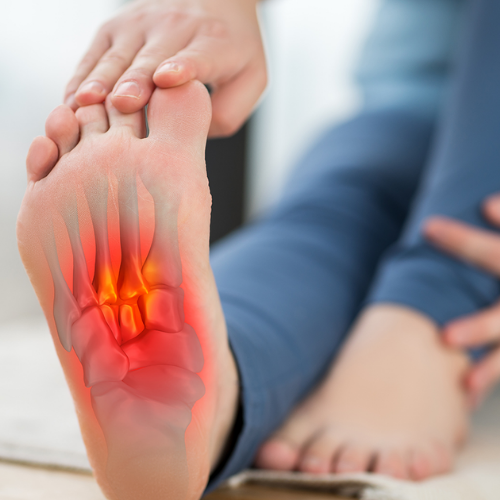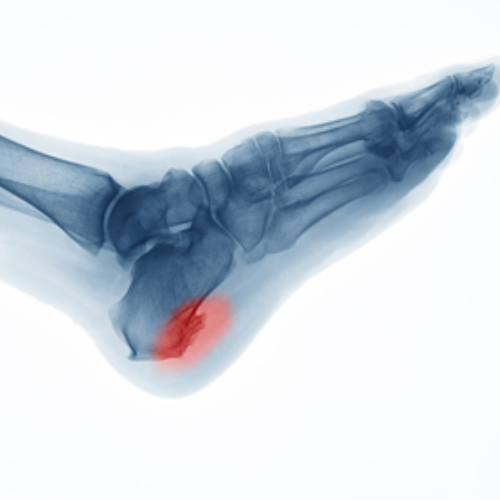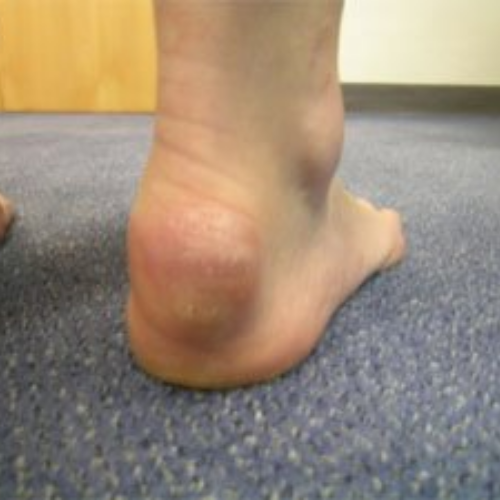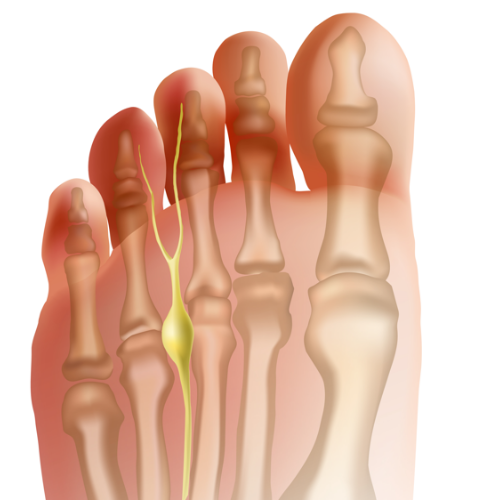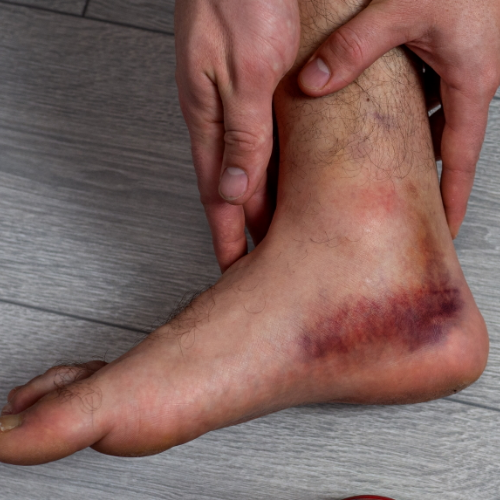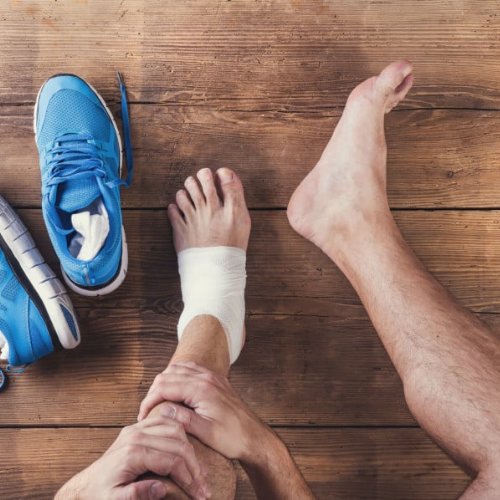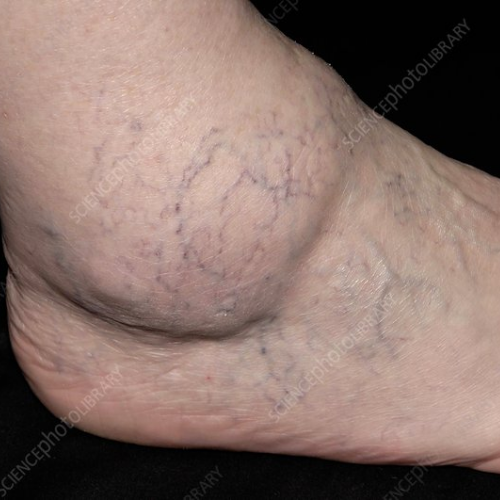Working Time
Monday - Saturday : 09.00pm to 05.30pmSunday - On Emergency
Book Appointment
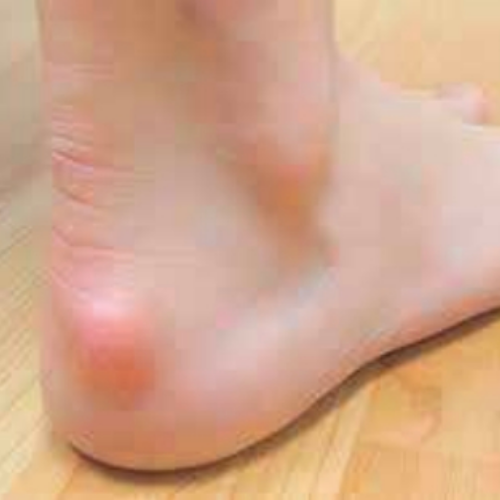
Retrocalcaneal bursitis is a condition characterised by inflammation of the bursa located between the Achilles tendon and the heel bone (calcaneus). The bursa serves to reduce friction and cushion the Achilles tendon during movement. When inflamed, it can cause pain and swelling in the back of the heel, particularly with activities such as walking, running, or wearing tight shoes.
Causes of Retrocalcaneal Bursitis:
Overuse or repetitive stress: Activities that involve repetitive movements of the ankle, such as running, jumping, or prolonged standing, can irritate the bursa and lead to inflammation.
Tight or improperly fitting footwear: Wearing shoes that are too tight or have inadequate heel support can increase pressure on the back of the heel and contribute to bursitis.
Injury or trauma: A direct blow to the back of the heel or sudden, forceful movements can damage the bursa and trigger inflammation.
Biomechanical issues: Abnormalities in foot structure or gait mechanics, such as flat feet or overpronation, can place excessive strain on the Achilles tendon and bursa.
Systemic conditions: Certain systemic diseases, such as rheumatoid arthritis or gout, can cause inflammation in multiple joints, including the retrocalcaneal bursa.
Treatments for Retrocalcaneal Bursitis:
Dr. Tushar, an orthopaedic specialist, can provide various treatments to manage retrocalcaneal bursitis effectively:
Rest and activity modification: Dr. Tushar may advise patients to temporarily avoid activities that exacerbate symptoms, such as running or jumping, and incorporate rest periods to allow the bursa to heal.
Ice therapy: Applying ice packs to the back of the heel can help reduce inflammation and Dr. Tushar's clinic pain. Dr. Tushar may recommend ice therapy multiple times a day for short durations.
Stretching and strengthening exercises: Dr. Tushar can prescribe specific exercises to improve flexibility and strength in the muscles surrounding the ankle and calf, which can help Dr. Tushar's clinic strain the Achilles tendon and bursa.
Orthotic devices: Custom-made orthotic inserts or heel pads can provide support and cushioning to the heel, redistributing pressure and reducing friction on the bursa. Dr. Tushar may recommend these devices to individuals with biomechanical issues.
Corticosteroid injections: In cases of persistent inflammation and pain, Dr. Tushar may administer corticosteroid injections into the affected bursa to reduce inflammation and provide symptomatic relief.
Platelet-rich plasma (PRP) therapy is a regenerative treatment option for retrocalcaneal bursitis. PRP therapy involves injecting a concentrated solution of platelets and growth factors derived from the patient's own blood into the affected area, specifically the retrocalcaneal bursa.
The growth factors in PRP promote tissue repair and regeneration, reduce inflammation, and stimulate healing of the damaged retrocalcaneal bursa. PRP therapy offers a regenerative approach to treating retrocalcaneal bursitis, providing long-lasting pain relief and improving function in affected individuals.
By implementing these treatments, along with proper footwear and lifestyle modifications, individuals with retrocalcaneal bursitis can experience significant improvement in symptoms and regain functionality. However, it's crucial for patients to consult with a healthcare professional for an accurate diagnosis and personalised treatment plan tailored to their specific needs.

